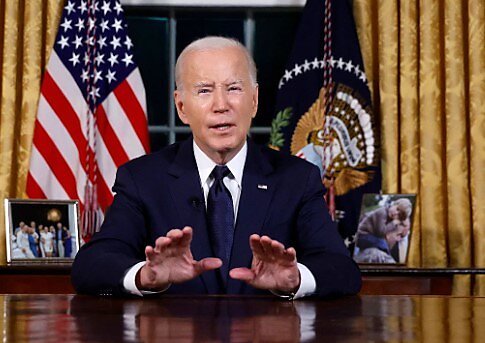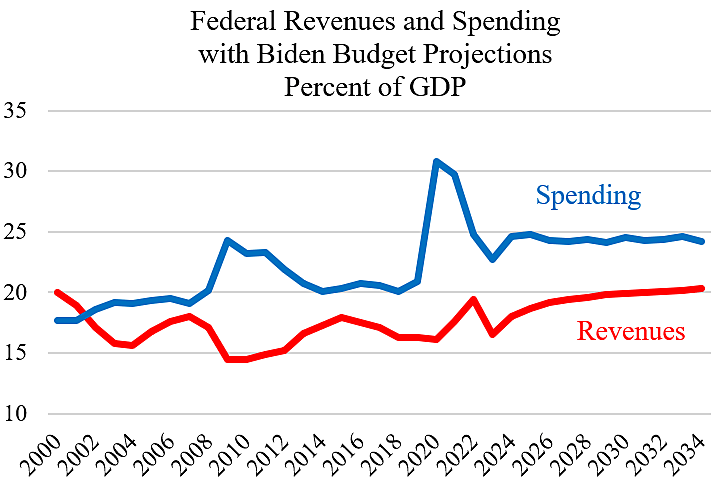
President Biden has released his proposed federal budget for fiscal year 2025 and beyond. The proposal includes a raft of spending increases, including new subsidies for childcare, housing, college, health care, paid leave, refundable tax credits, home care, and many other things. It also includes a bevy of large tax increases, including higher rates on individual income, corporate income, and capital gains.
The chart below shows the Biden projections for federal revenues and spending as a percentage of gross domestic product (GDP). The budget claims a “commitment to fiscal responsibility,” but you can see that spending remains at a much higher level than pre‐COVID, and there continues to be a giant gap between revenues and spending. The budget would add $17 trillion to government debt over the coming decade.
Indeed, the fiscal reality is worse than shown in the budget because of smoke and mirrors. The budget, for example, shows nondefense discretionary spending falling from 3.5 percent of GDP this year to 2.5 percent in a decade. That would be great if Biden put in motion such spending cuts, but that is not what the administration is planning to do.
Another trick is accounting for a subsidy hike in the first year, but then assuming it’s not continued after that. The budget proposes expanding the child tax credit at a cost of $210 billion in 2025, but then assumes the expansion expires after that. Yet we know that if Biden is reelected, he would likely push to extend the higher credit after 2025 for a 10‐year cost of $2 trillion or more.
On the revenue side, the bevy of tax hikes will not happen if Republicans hold either chamber in Congress. And the projected revenues from the hikes are likely overstated even if they did pass because the hikes are on the very responsive tax bases of capital income and high‐earner income.
The Biden budget promises “meaningful deficit reduction through measures that reduce wasteful spending” but does not deliver. Members of Congress wanting better ideas to cut waste should consult here, here, and here.

Themes: